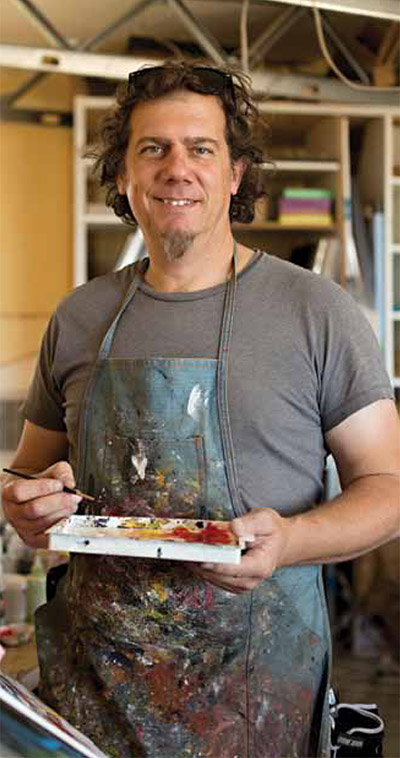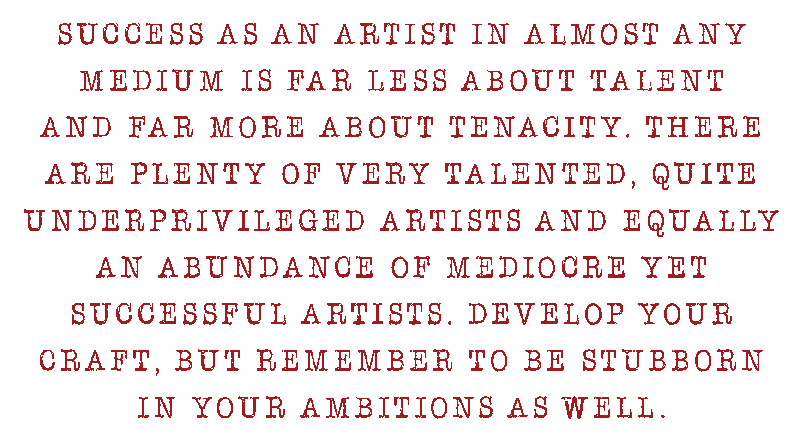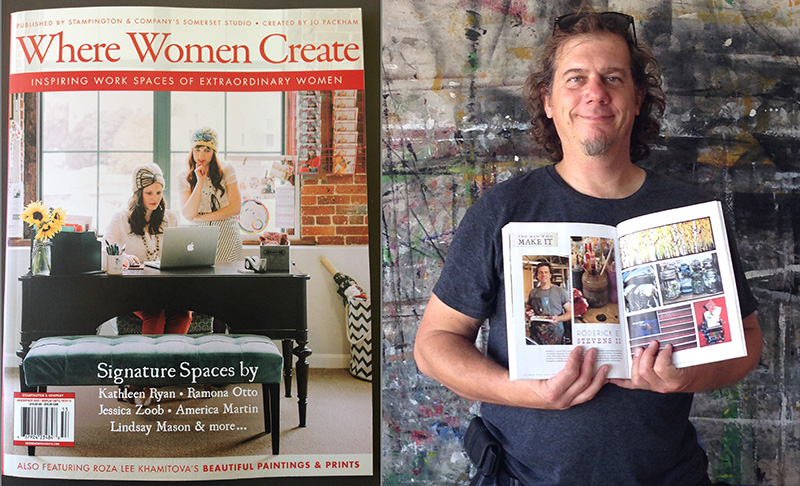
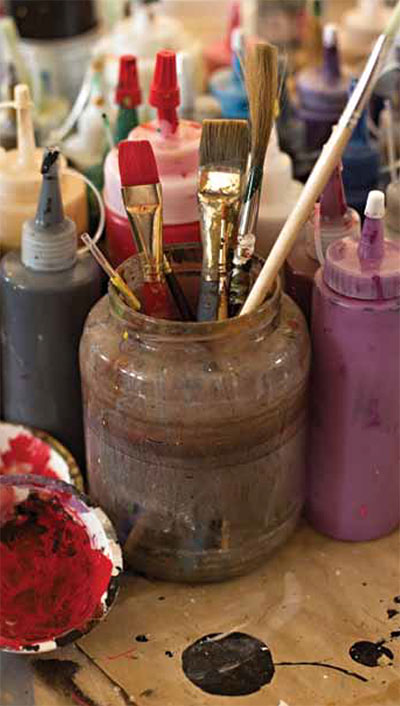
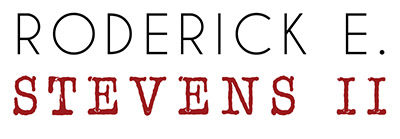
Roderick E. Stevens II is a multi-faceted artist with seemingly boundless aspirations and deeply entrenched enthusiasm. An award-winning painter in multiple styles and mediums, an assemblage artist, a filmmaker, and even an award-winning screenwriter, Roderick lives in a remote corner of the desert in Arizona, in a home and studio he designed and built with his family. He greatly enjoys sharing his youthfully optimistic perspectives on art, business, and the search for contentedness.
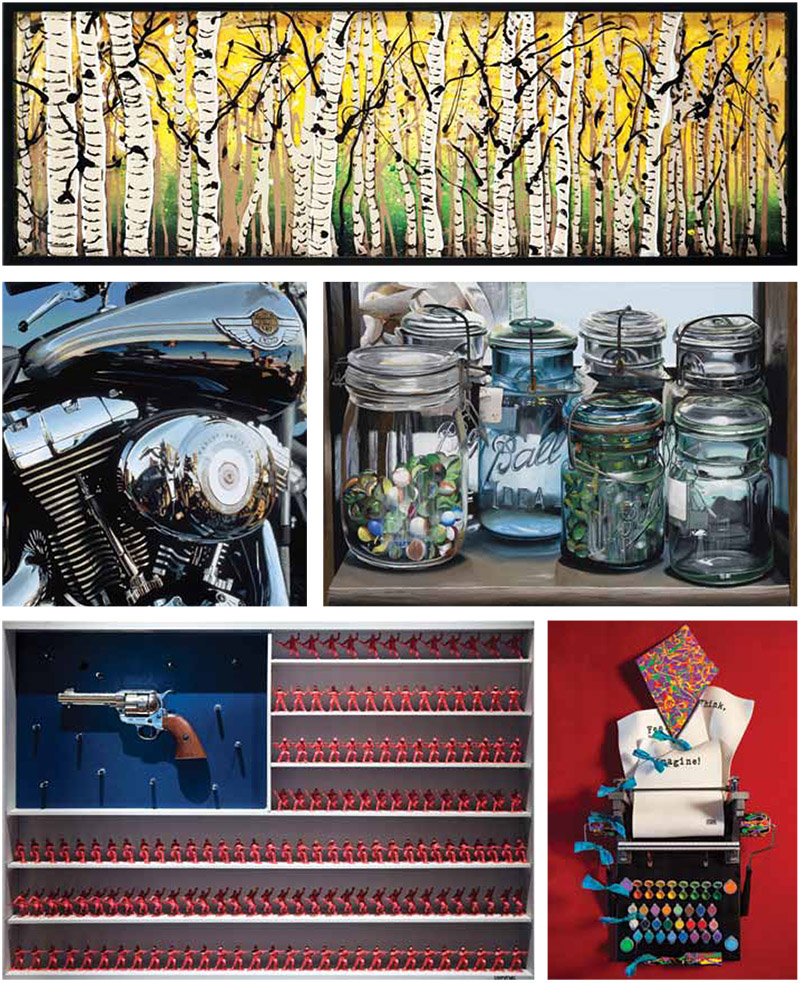
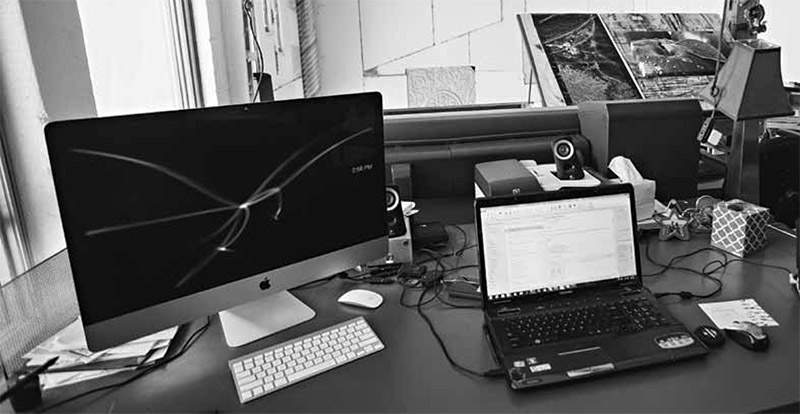
I entered humanity the first child of a single mother and almost immediately squeaked out my desires to create. My earliest recollections include a strong passion for filmmaking. This was solidified, of course, just as it was for countless others of all ages in 1977 with the release of “Star Wars.” Beyond film and writing, however, I found early on that I had an obsession with creating at every possible level.
As a young’n, my mom taught me to sew, and I took part in making some of my own clothes. She handed me my first set of oils when I was 7, and I promptly began concocting all manner of abstract color casseroles on paper. I was also enthralled with design and developed a love affair with graph paper and pencils, which I used to design custom homes I promised to one day build for her. By custom homes, I mean custom single-wide trailers, as we were rather fiscally challenged. As I grew into my teens, I found myself wide-eyed at photorealism and the challenge of rendering subjects with such precision as to trick the eye (trompe l’oeil). This eye for detail brought me back to my first love of filmmaking, as I was intrigued by the work of matte painters in movies laden with special effects.
As adulthood and family responsibilities nudged me into my 20s, all these varieties of artistic expression became relegated to occasional hobbies while I pursued my priority of filmmaking. For 15 years I worked largely as a cinematographer, handling the camera and lighting for over 25 independent feature films, countless short films, music videos, and the like. In 2004 however, the universe wrought upon me the proverbial cosmic 2" x 4", making it painfully obvious that I was not at all operating in harmony with the world around me. As I was forced to sit down, be quiet, and learn to pay attention to where life appeared to be taking me, I took up a paintbrush for the first time in a decade.
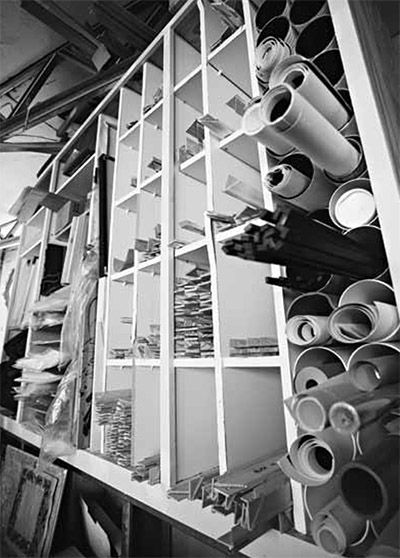
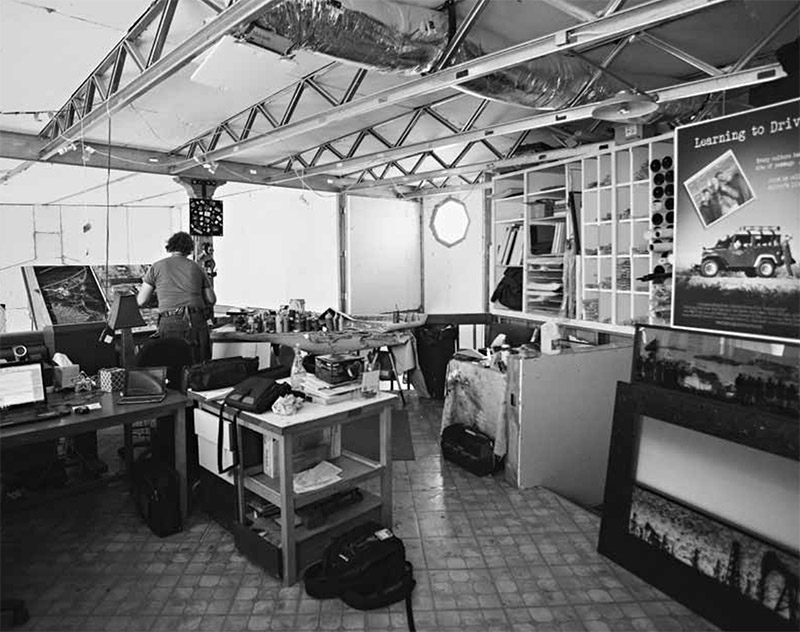
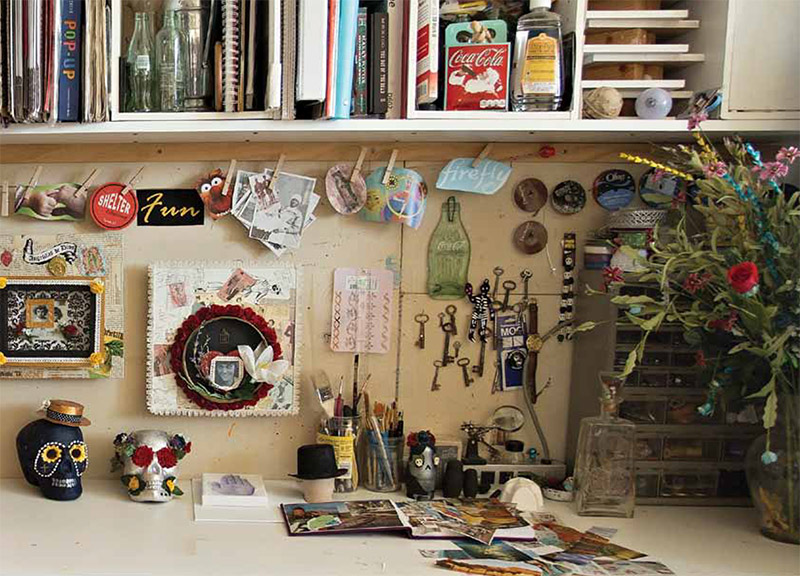
At first, I turned to photorealistic painting as a therapeutic move, creating a self-portrait in response to my new search for self. When completed, I thought, “Hey! I’m pretty good at this! Maybe I should paint for a while!” I soon began touring and displaying my photorealistic paintings at art shows and galleries around the country. Like many photorealists, I found myself drawn to the challenges of rendering reflective and refractive surfaces like glass, water, chrome, and the like. It was quickly evident that all my work as a cinematographer had improved my eye for discerning light and detail. Painting realism is far more about the eye than the brush in hand; it is about the artist’s sense of seeing beyond the obvious surfaces in front of us. For instance, when giving workshops I will explain that painting chrome is simply about painting the environment around the object and how it is being distorted by that object; or how painting glass is to a large degree about painting whatever is on the other side of that glass and then noting how that image is being affected and refracted by the glass.
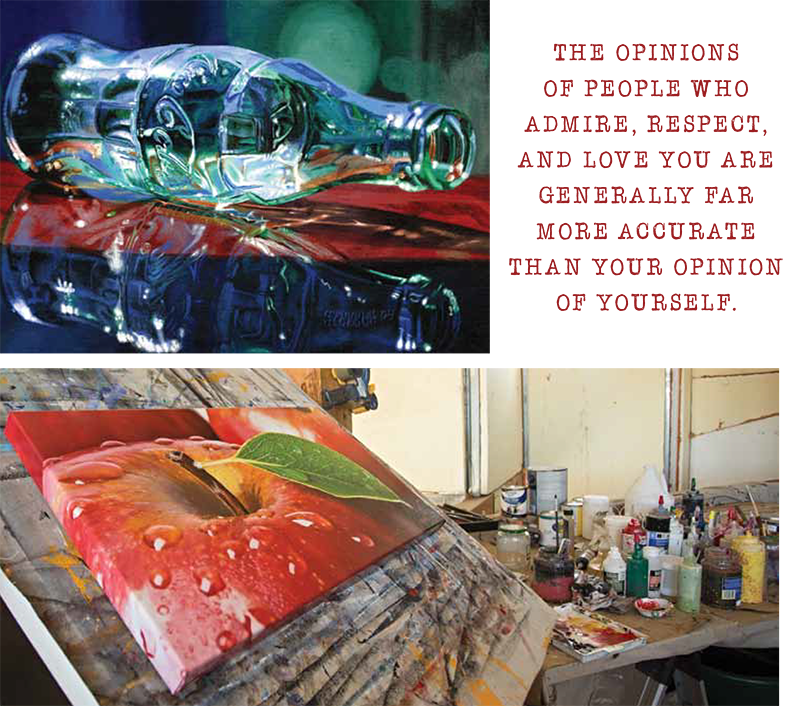
I work in acrylics rather than oil paints largely to accommodate my own impatience. Folks are often perplexed by this because of how much longer oils stay workable, which is important when painting realism with all of its subtle gradations and blending. In order to compensate for acrylic’s fast drying time, I employ three techniques: I use a wet palette, I use acrylic retarders, and I work very fast! When I paint, I am engrossed by the process and am as excited as a child on Christmas. Fortunately, I can work in almost any environment, including motel rooms while I’m traveling and even live at art shows in front of an audience. The ideal is, of course, in my own studio at home. After acquiring 16 acres in southeastern Arizona, my family and I built a highly energy-efficient home constructed largely of steel and Styrofoam that includes a 400-square-foot loft studio overlooking the living area. We also built what most folks would consider a two-car garage, but what functions for me as a sizable workshop for all of my messier construction and assemblage work with power tools and the like.
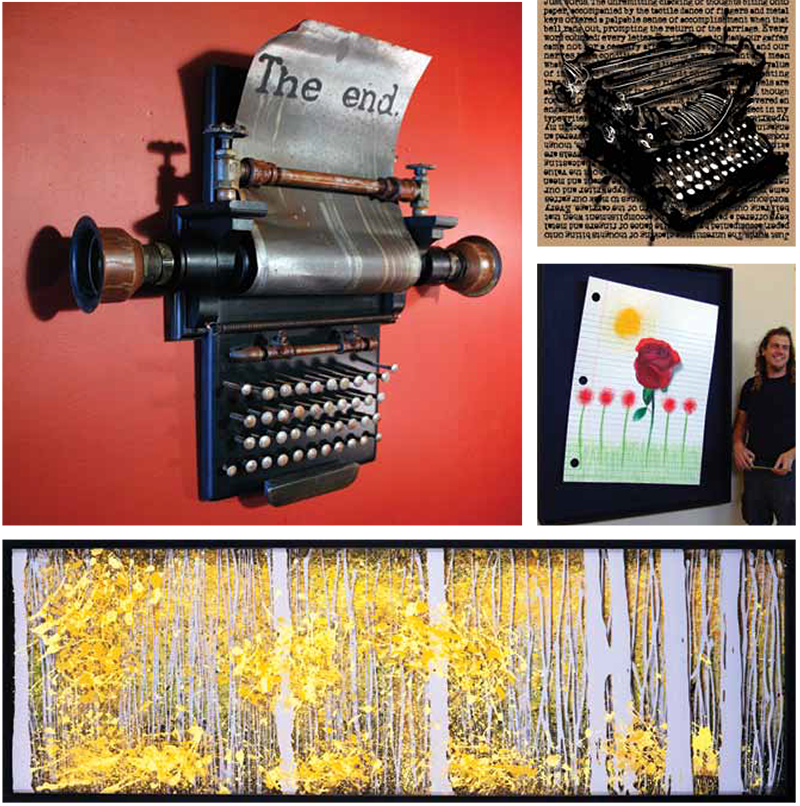
It was during the process of building the house when I envisioned a giant replica of a manual typewriter made of faucets, plumbing components, and other familiar household and construction objects. At the time, this was a complete departure from my very familiar two-dimensional work in realism, but when a collector in Palm Springs, California, allied with my vision and bought this new piece within hours of its debut, it was as if a door to a new world had opened up for me! I discovered a new passion in mixed-media assemblage work, especially in replicating objects from childhood and history on a grand scale, consisting of familiar yet unrelated objects; for instance, a giant telephone constructed of shower parts, light switch covers, and picture frames. I also embraced a love affair with emulating paper, creating giant notebook pages with childlike crayon drawings on them and then utilizing my photorealism skills to add another layer of illusion to each piece.

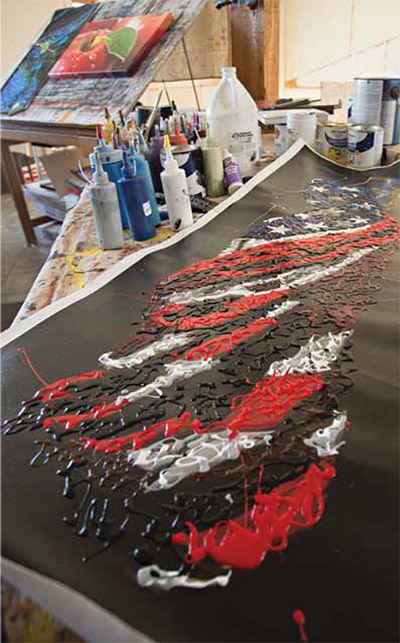
Until that point, all of my work was still largely about fine detail, and there was a part of me longing to find a looser form of expression. Put simply, I really wanted to just fling some paint around. To that end, I developed my latest body of work I call Drizzlescapes. Initially I was drawn to the idea of drizzling, dripping, and spraying enamel paints to capture familiar silhouettes over vibrantly painted backgrounds. Because illusion and depth have always intrigued me, I then added layers to the concept by painting onto the backside of clear sheets of acrylic, which I then mounted into custom frames with space between them. Each layer is independent and casts its own shadow on those behind it. Some of the larger pieces have as many as six separate layers of paint and other elements in them.
Who knows what the next chapter is for me? I find I am always excited by the idea of exploring new forms of creativity. I recently began production on a short film project of my own titled “Learning to Drive,” which is inspired by the true story of a spirited young man with Down's syndrome determined to convince his brother to teach him how to drive. The screenplay has won two awards thus far, and I am humbled by the amount of support the project has received as we’ve begun shooting and editing.
I can’t deny there are times I envy artists who are content with focusing on a single process, medium, or subject matter. Conversely, I am ever drawn to exploring new concepts, methods, and subject matters. I take in the world around me like a child entering an amusement park for the first time. While being me can sometimes be exhausting, I am grateful for my deep well of passion for creativity and the ability to make a living by bringing joy into people’s homes.

Roderick E. Stevens II
roderick@restevensart.com
www.yesitsapainting.com
www.drizzlescapes.com
www.learningtodrive-movie.com

